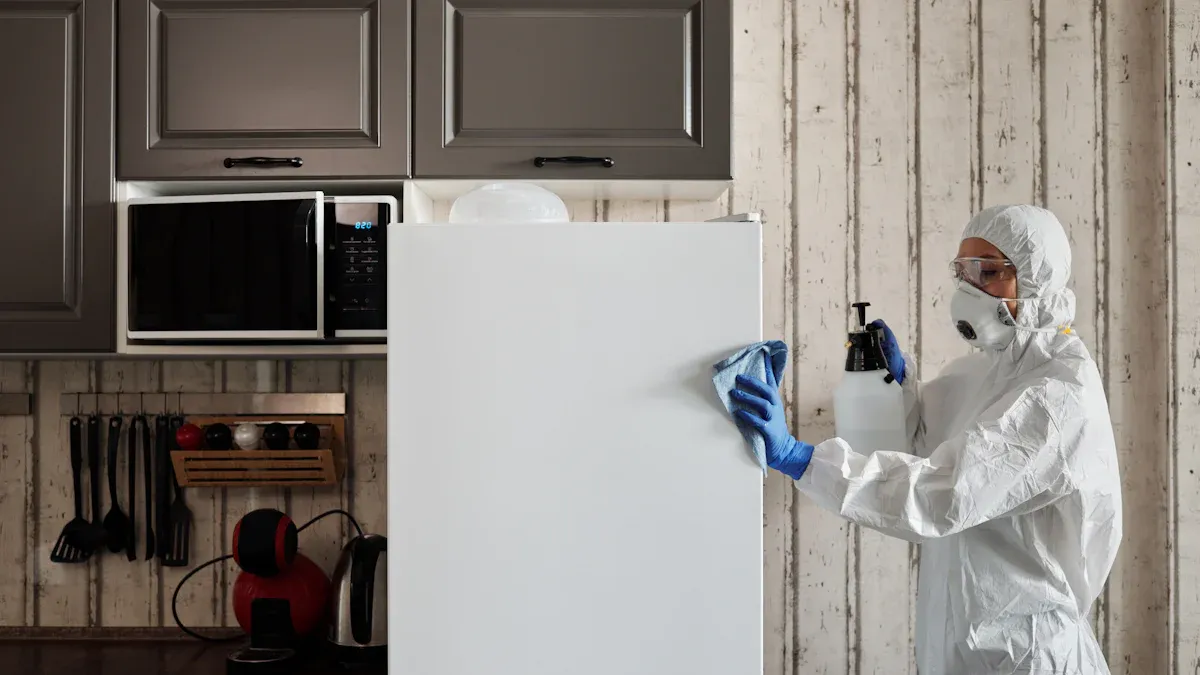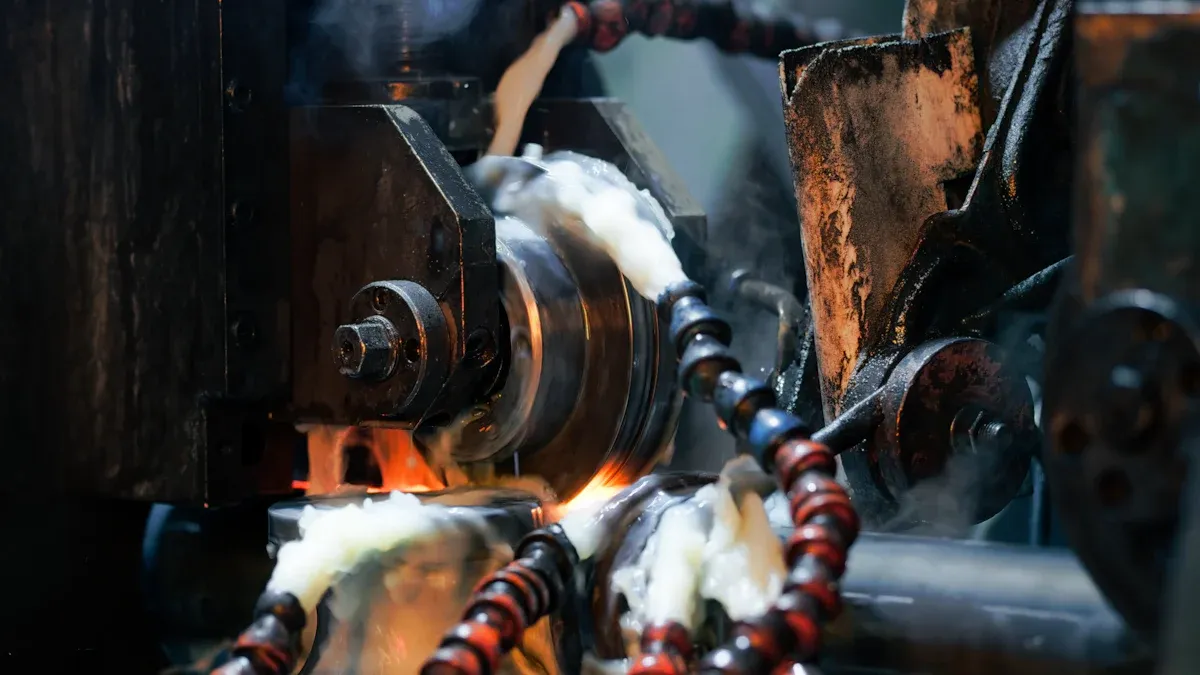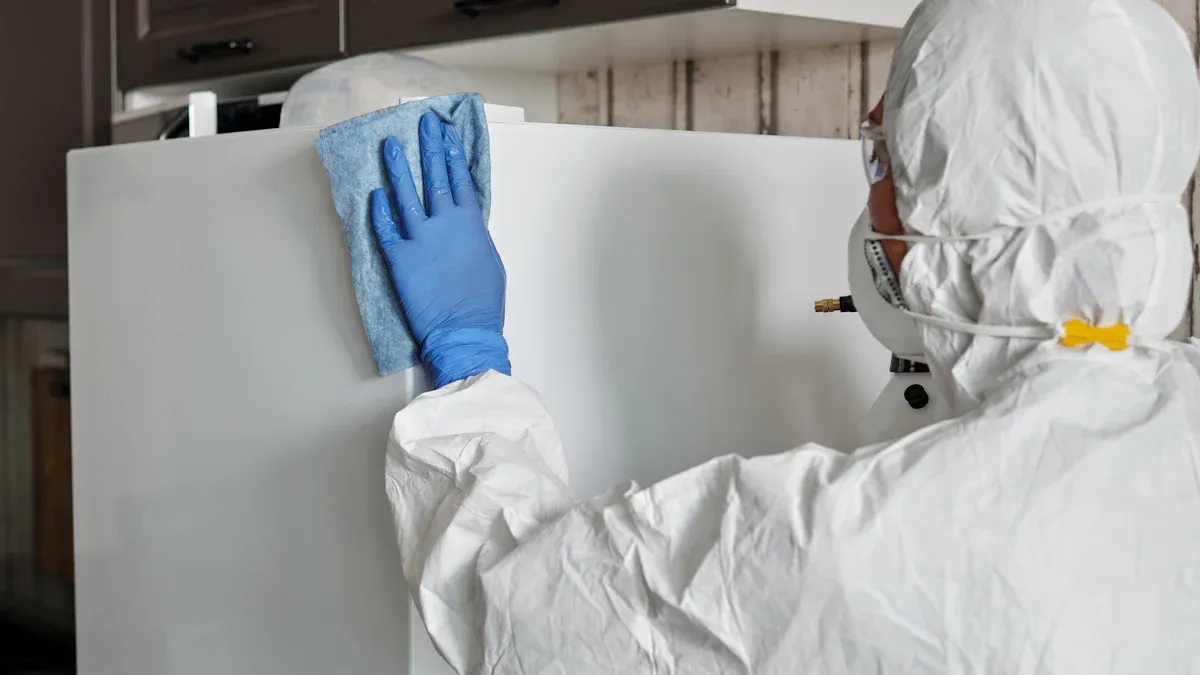Why Low Temperature Chillers Are Essential for Modern Science and Industry

Low temperature chillers are very important in science and industry today. These systems help control temperature very carefully. This protects delicate equipment and keeps things running smoothly. Many labs and factories use low temperature chillers to keep machines safe. They also help people make new discoveries. When a chiller works really well, it can save almost 7% on yearly costs. It can also use over 3% less energy. These savings help lower CO2 emissions. By using new low temperature chiller technology, many companies save energy and do better work.
Key Takeaways
Low temperature chillers protect machines by keeping the temperature steady in labs and factories.
These chillers use less energy and save money with new technology and regular check-ups.
Smart sensors and hybrid cooling help chillers work well and use less electricity.
Low temperature chillers help with important jobs in science, medicine, food safety, and industry.
Picking the right chiller and taking care of it can help the environment and make it work better.
What Are Low Temperature Chillers?

Low temperature chillers are very important in science and factories. These machines take heat out of liquids. This helps things get very cold. A low temperature chiller can cool fluids to -5°C or even colder. Labs, hospitals, and factories use these chillers for exact temperature control. Ultra low temperature chilling keeps sensitive equipment safe. It also helps with research at very cold temperatures.
How Low Temperature Chillers Work
A low temperature chiller uses a refrigeration cycle to cool things down. The cycle starts with a compressor. The compressor makes the refrigerant hotter and under more pressure. Then, the refrigerant goes to a condenser. Here, it lets out heat and turns into a liquid. Next, the refrigerant moves through an expansion valve. This makes it colder and lowers the pressure. In the evaporator, the refrigerant takes in heat from the fluid. This cools the fluid to very low temperatures. The cycle keeps going to keep things cold.
Chillers for cold places have insulation on pipes and inside parts. This stops freezing and keeps the chiller working well, even in cold air. Many chillers have a defrost feature. This melts frost that can form on the condenser. It helps the chiller stay efficient. Covers and windshields also protect the chiller in bad weather.
Key Components
A low temperature chiller has many important parts:
Semi-hermetic compressors give strong and steady cooling.
Oversized vertical discharge condensers help save energy.
MCS temperature sensors check water, glycol, or refrigerant temperatures for control.
LP switches watch suction pressure to protect the compressor.
HP switches stop damage by checking discharge pressure or temperature.
TI-100 temperature indicators show real-time readings for easy checks.
All these parts work together for safe and accurate cooling. They help the chiller work well, support automation, and make fixing easier. Many cooling systems need these features to do their best.
Low Temperature Chiller Efficiency
Factors Affecting Efficiency
Many things can change how well a chiller works. Clean coils help the chiller move heat better. Dirty coils make the system use more energy. The right mix of water and glycol in the fluid keeps the chiller running smoothly. If the mix is wrong, the chiller may freeze or not cool enough. The type of refrigerant also matters. Some refrigerants work better at ultra low temperature. They help the chiller use less energy and cool faster.
Regular maintenance keeps the chiller in top shape. Technicians check for leaks, test sensors, and clean parts. This stops small problems from becoming big ones. When a chiller gets regular care, it lasts longer and uses less energy. Many companies use a schedule to make sure every part gets checked.
Tip: If you take care of your chiller, you can save almost 12% on energy. You can also cut costs by more than 34%. This means you pay less money and waste less.
Energy Efficiency Technologies
New technology helps chillers save more energy. Magnetic bearing compressors use magnets, not oil. This makes less friction. The chiller runs quietly and smoothly. Nano-enhanced phase change materials (PCMs) store cold and let it out later. These materials help the chiller stay cold for a long time.
Hybrid cooling systems use more than one way to cool. Some use both air and water to cool the chiller. This helps the chiller work in many places. Dynamic control strategies use smart sensors and computers. These tools watch the chiller and change settings to save energy. The system can change itself to match how much cooling is needed.
Researchers have tested these new ideas in real life. For example:
Dynamic simulations compared clathrate hydrate cold storage with regular refrigeration and ice storage. The chiller’s COP reached up to 6.2, and the whole system COP reached 3.7.
Tests showed that these chillers can lower operating costs. Some systems paid for themselves in just 2.4 years.
Life Cycle Cost Analysis looked at payback, net present value, and return on investment. The results showed strong gains in performance.
Advanced monitoring and predictive modeling proved that energy storage and system performance improved at both small and large scales.
Studies using climate data from places like Shanghai found that hydrate cold storage systems used less energy than ice or regular systems.
Adjusting phase change materials and how the chiller runs led to big savings in energy and money.
Choosing between water-cooled and air-cooled chillers changes how much energy you use. Water-cooled chillers often use less energy because water removes heat better than air. These chillers work well in big buildings or factories. Air-cooled chillers are easier to put in and need less care. They fit in smaller spaces or places where water is hard to get. Both types can reach ultra low temperature, but water-cooled models often save more energy over time.
Feature | Water-Cooled Chiller | Air-Cooled Chiller |
|---|---|---|
Energy Efficiency | High | Medium |
Maintenance Needs | Higher | Lower |
Space Requirement | More | Less |
Ultra Low Temperature | Yes | Yes |
Best Use | Large facilities | Small/medium sites |
Ultra low temperature chilling depends on these new technologies and smart choices. Energy-saving chillers help protect the planet and lower costs. As cooling systems get smarter, they will use even less energy and keep science and industry moving forward.
Benefits of Low Temperature Chillers
Cost and Environmental Impact
Low temperature chillers help save money and protect nature. Companies can pay less for energy when they use these chillers. Some chillers have special features like PVT cooling and smart controls. These features can lower energy use by up to 64%. They also help cut down on bad gases that hurt the earth. Many chillers now use low GWP refrigerants to help the planet.
The table below shows how much money and energy these chillers can save in real life:
Metric | Result / Range | Notes |
|---|---|---|
Cooling energy consumption reduction | PVT-assisted renewable cooling with adaptive control strategies | |
Payback period | 2.11 – 3.75 years | Depends on system size and chilled water tank volume |
Cooling Power Usage Effectiveness (PUE) | Below 1.05 | Shows ultra-efficient cooling and lower emissions |
Many companies use cloud tools to watch how chillers work and use energy. This helps them find more ways to save. When businesses pick low temperature chillers, they help the earth and make less pollution.
Reliability and Performance
Low temperature chillers are also very reliable and work well. They keep equipment safe by holding the right temperature. In labs and factories, even a small change in temperature can cause trouble. A good chiller keeps things cool and stops expensive problems.
Chillers with smart sensors and controls can change fast when needed. This keeps them working well and stops overheating or freezing. Many chillers last for years if they get regular care. Their strong work helps companies avoid stopping work and stay on schedule.
If you take care of your chiller, you can relax. It keeps things cool and helps science and industry do their best.
Applications of Low Temperature Chillers

Scientific Research
Ultra low temperature chilling is very important in science. Labs use these systems to keep samples and chemicals cold. They also protect sensitive tools. Researchers need steady cold for their experiments. This helps them get good results. Medical imaging centers use chillers for MRI and CT machines. These machines must stay cold for clear pictures. Schools and research places use chillers to help people learn and find new things.
Research labs use chillers to keep cleanrooms at the right temperature. These rooms also need clean air and the right humidity.
Smart sensors watch temperature and humidity all the time. This helps researchers change the cooling when needed.
Building Management Systems with Motor Control Centres help control cooling. They also help save energy.
Chillers help keep vaccines and medicines safe in drug research.
Ultra low temperature chilling lets scientists find new things. It also keeps research tools safe.
Industrial Uses
Industrial chillers help many businesses. Each business needs different cooling. Food and drink companies use chillers to keep food safe. These systems keep food fresh and stop it from going bad. Car companies use chillers to test electric car batteries. This helps make cleaner cars. Data centers need chillers to keep servers cool. This keeps computers working.
Food plants use chillers to give people safe, good food.
Hospitals use chillers to cool medical tools and keep medicine cold.
Phone and data centers use chillers to keep important equipment cool.
Factories use chillers to cool machines. This helps them work better and make good products.
Ice rinks need chillers to keep the ice smooth and safe.
Some jobs need special chillers. For example, shell and tube ammonia water chillers are good for ice rinks. They cool very well. Companies like Schneider Electric and Daikin make chillers that save energy. These chillers help businesses follow rules and protect the earth.
Ultra low temperature chillers help businesses grow. They give steady cooling and help new technology.
Low temperature chillers help science and industry. They keep equipment safe and make work steady. New technology makes these chillers work better and last longer. They are also better for the earth. Many companies use smart controls and AI to save energy. This helps them spend less money. The table below shows how cooling is getting more efficient:
Aspect | Trend or Statistic |
|---|---|
Market Growth | |
Energy Savings | Up to 35% with AI and IoT controls |
Smart Integration | 45% of buildings plan IoT-enabled VFDs |
In the future, chillers will use even smarter tools. These tools will help people do their jobs and protect the planet.
FAQ
What is the lowest temperature a chiller can reach?
Most low temperature chillers cool fluids down to -40°C. Some special chillers can go even colder. The lowest temperature depends on how the chiller is built and which refrigerant it uses.
How often should a low temperature chiller get maintenance?
Technicians should look at chillers every three to six months. Cleaning and checking them often stops problems before they start. Taking care of chillers helps them work well and last longer.
Can low temperature chillers use eco-friendly refrigerants?
Yes, many new chillers use low GWP refrigerants. These refrigerants are better for the earth. They also follow today’s safety rules.
Why do laboratories need precise temperature control?
Some experiments and tools need the same temperature all the time. Even a small change can mess up results or break equipment. Chillers help labs keep things steady and safe.
What industries use low temperature chillers the most?
Pharmaceuticals, food factories, medical imaging, and data centers use chillers a lot. These places need chillers to keep products and equipment safe.

